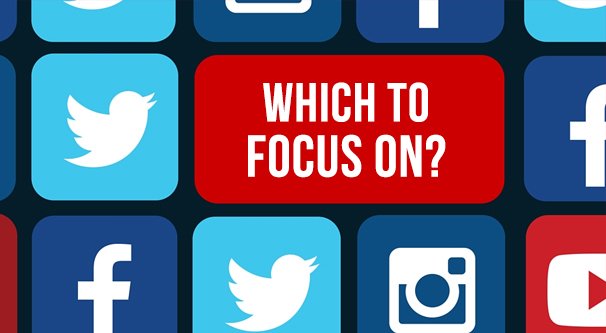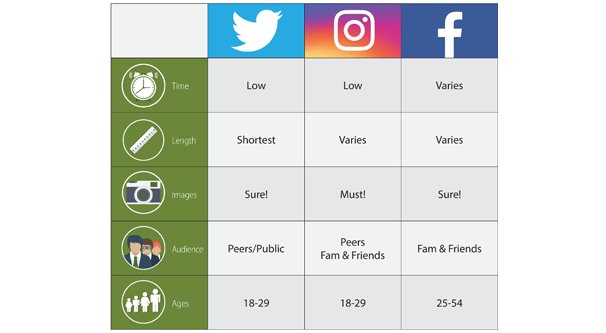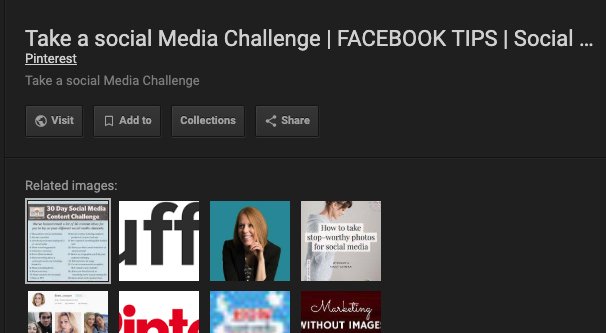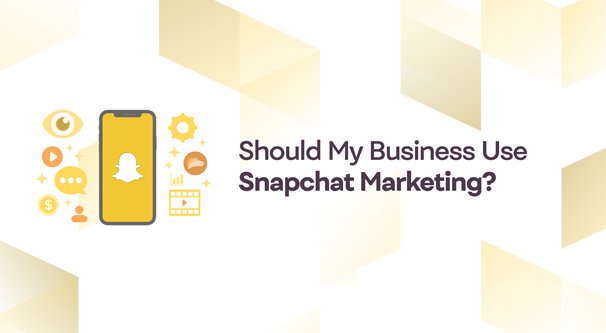Everyone says that if you’re not taking advantage of social media, you’re leaving untold amounts of business on the table. For almost every single business out there, this is 100% true. There’s pretty much no valid reason why you wouldn’t want to use social media, for one simple reason: the people who make decisions to buy your product or service are themselves using social media.
This means you have to answer one of the trickiest and most important questions a business can be faced with, at least in terms of marketing. Which social networks should you use?
Well, first off, why not all of them? If you cover all of your bases, you’re guaranteed to be in the right place at the right time.
The answer is one of cost and effort. Using a social network at a casual level is free, but using one at a business level is not. You have to invest in learning about your audience. You need to invest in content to attract that audience. You need to invest in people to monitor and manage and engage with your audience. You need to pay for advertising, if you’re going to invest that far in your platform of choice. All of this costs time and money.
Managing one or two social media profiles isn’t too difficult. Managing three or four gets quite challenging. Managing five or more can be downright impossible without a full-time staff dedicated to nothing but your social media presence.
How to Find Your Audience
While I can give you plenty of good general advice, and I will, every business is different. You need to pick a social network or two for your brand, and my advice might not apply specifically to you. You can always post your situation in the comments below for advice, but you may simply need to do some legwork.
What kind of legwork do I mean? Social Listening.
Social listening is the idea of listening to people on social media to see what they have to say. Usually it’s used to monitor brand mentions and see if there are trending topics you can address, testimonials you can praise, or customer interactions you can engage with.
However, social listening – combined with some general knowledge of social networks and of your own audience – can help you determine one important factor before you take another step. That factor is simple: where is your audience in the first place?
Different social networks appeal to different groups of users. Your audience may be a narrow demographic that is almost entirely represented on one social network. More likely, though, your audience is made up of several complex groups of people, and those people tend to frequent different social networks.
For example, Facebook is trending on the older side these days as younger users leave the platform their parents are on. Twitter appeals to faster-paced, more urban, more technological users. Pinterest is leaning heavily towards a female audience, largely with a higher average income and an interest in DIY topics. Much of today’s youth is on Instagram, Snapchat, or other more direct messaging apps or apps like TikTok.
There’s a three-step process for identifying the social networks where your audience may be.
The first step is to look at and understand the average demographics of each social network. Articles like this one can go a long way towards giving you a surface-level understanding, and you can do deeper research once you know what you’re looking for.
The second step is to create your buyer personas. Buyer personas are the averaged, idealized versions of people who are in your audience. Businesses typically have several of these, unless you’re a very narrow business with a very specific product. Hubspot can help you with this part.
The third step is verification. Take a persona and look for that kind of user on the social network where you think they’ll be. Are they there? If they are, you’ve found a social network that can be a good choice to use. This article can give you a good overview of the whole process as well, though some of the advice and statistics no longer apply. Vine and Google+ are both dead, for example.
Another hint you can use to find social networks useful to your business is checking your website analytics. What social networks are showing up as referrers in your referral data? Facebook and Twitter are sure to be up there just through general internet usage, but others may appear and surprise you.
Now let’s talk about each social network in general terms.
Facebook is the largest social network in the world, but it’s very difficult for brands. Low organic reach and a new push towards groups means you have to be very active, very social, and willing to spend money to succeed. Facebook is largely for older millennials, boomers, and the younger side of the older generations, and largely operates through family ties these days.
Should you use Facebook? Certainly! Very few brands are able to put Facebook to the side and ignore it entirely. The simple fact that it has over two billion users monthly means you’re going to have an audience there, pretty much no matter what.
Twitter is evenly split between genders and fairly roundly through ages, though it peaks in the millennial and early Gen Z groups. It’s a good platform for multiple purposes: some people use it for humor, some people use it for news, some people use it for storytelling. I’ve seen it used as an RSS replacement, and I’ve seen it used solely for customer service. These days it’s one of the most effective ways to get customer service out of an otherwise aloof brand, for fear of viral backlash.
Should you use Twitter? Probably! Twitter’s power for direct, fast, responsive customer service is extremely high. Combined with the ability to go viral at the drop of a hat, there’s no reason not to invest in this one.
LinkedIn is like Facebook but for businesses and professional relationships instead of friends and family. Businesses use it to network with other businesses, and it’s the best social network by far when you’re operating in a B2B space instead of the traditional B2C. It’s also a good network for finding new employees to hire, and keeping in touch with coworkers who are professional acquaintances.
Should you use LinkedIn? Maybe! If you’re not operating in a corporate or B2B space, the utility of the site goes down. I always figure it’s worth creating a profile just to represent your business and build connections, but you don’t need to go all-in with weekly posts on the blog or anything like that.
Pinterest, as mentioned above, is a social network that historically skews heavily in favor of a female audience, though that demographic has evened out a lot in recent years as more and more (male) marketers are invading the space to reach that audience. Demographics tend to include people with an interest in DIY and, more importantly, the income and education levels necessary to make DIY a leisure rather than a necessity born of poverty. Pinterest users like crafty tutorials and content full of imagery. Pinterest is also easily able to dominate the Google image search results, which can be an unexpectedly brilliant source of traffic.
Should you use Pinterest? Maybe! Pinterest can be great if you have the kind of content that falls into the interest range of that audience. It’s diluted a lot by marketers trying to use it as an aggregator, though, so your content needs to stand out from the rest.
Instagram is Facebook’s spin-off at this point, though it started as its own gated, mobile-only community that attracted a largely younger audience. Today it skews slightly female, with the majority of the audience still lingering under the age of 35. Very few people are able to make headway on the platform when they’re older, either because they don’t quite get it or because it’s just hard to keep up. Instagram, being image focused, is very good for visual marketers, and less so for those who prefer the thousand words over the picture.
Should you use Instagram? Sure! Instagram is great, again, if you have a visual storytelling style or a very stylish brand that comes through with graphic design and art quite clearly.
Snapchat
Snapchat is in a strange place. It started life as a “burn after reading” messenger, a place for youth privacy in an app that parents didn’t get and couldn’t track. It has expanded somewhat, but its core feature has been taken over by Instagram Stories. Still, if you can use it effectively for marketing, it’s one of the best ways to reach the up and coming Gen Z. I’m going to be honest here; Snapchat marketing is an arena I’ve barely even glanced at, so I can’t give you any keen insights into how it’s used or how to use it.
Should you use Snapchat? That’s up to you! If reaching young people – including a significant number of people under the age of 18 – is your core demographic, it can be one of the best channels available to you. On the other hand, it’s difficult enough to use and non-standard enough that it’s tricky to dive right in.
Reddit is one part social network, one part web forum, and one part loose collection of disconnected tribes. The overall architecture of Reddit is made up of sub-reddits, sub-forums dedicated to individual topics that can be as broad as “gaming” or as narrow as a community dedicated to a single niche foreign actor. It’s sort of like Facebook Groups writ large. As such, there are a huge array of different communities ranging from a few hundred to a few million people. The hard part is finding the right place for your brand to live.
Should you use Reddit? Absolutely! Reddit is a great network to use, but you have to approach it casually. Overt marketing is often downvoted into oblivion. Act like just another user who happens to own a business, and you can find much greater success.
YouTube
YouTube isn’t strictly a social network, and I only include it because Google insists on trying to make it a social network. There are a lot of community-building features, but it’s inconsistent to say the least. Google keeps removing features and many of the old useful features are absent in the new creator studio. Even so, it can be a good site for marketing if you’re able to produce high quality video content. High quality is the key; if you aren’t producing the best of the best, you aren’t going to get away with much.
Should you use YouTube? Maybe! YouTube thrives on viral videos, but there’s a lot that goes into producing them, and video production is still not easy even in 2019. If you’re confident in your video production skills, go for it.
Other Networks
There are a bunch of other networks and pseudo-networks you can consider as well. Quora is a social question and answer site that can bring in quite a bit of engagement. Slidedeck isn’t really what I would call a social network, but can be an excellent marketing channel. Some people include Tumblr as a social network, though I feel it’s more of a social blogging platform. There are also foreign networks, like VK, if you have an international audience. All of these I leave up to your own research and discretion.









